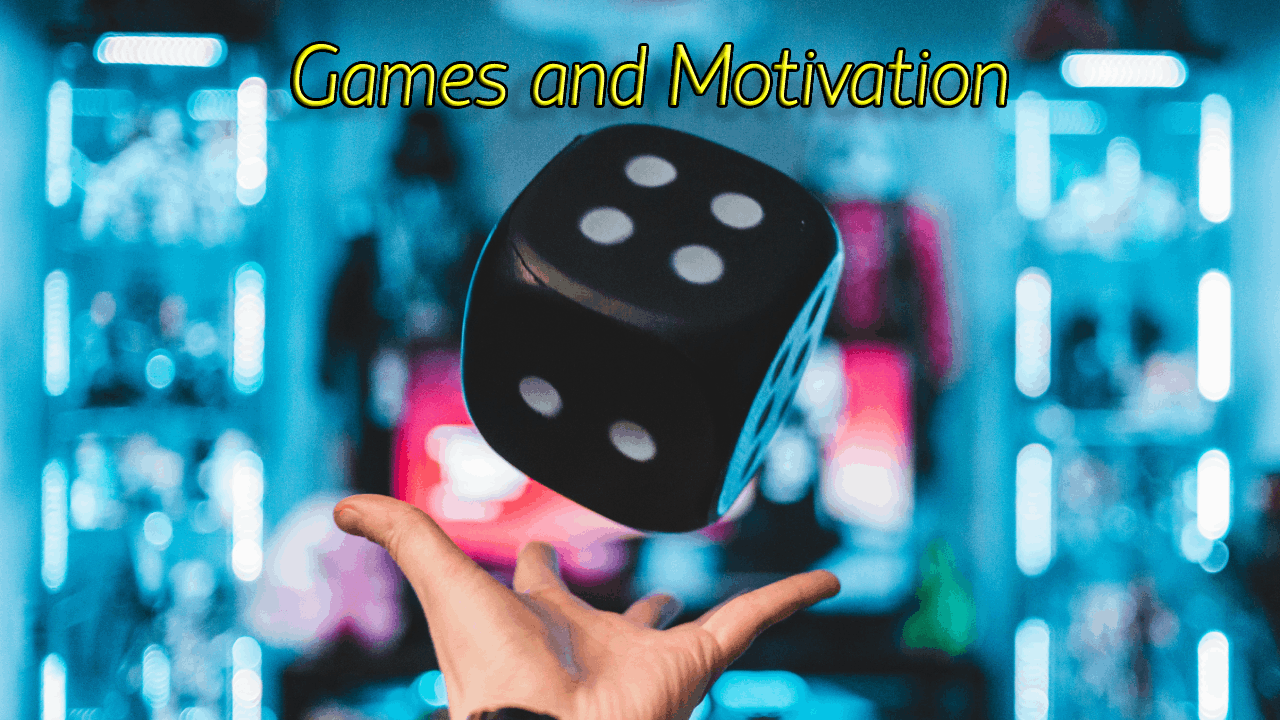Games and Motivation
Understanding motivation through octalysis gamification drives by Yu-Kai Chou.

Recently, I finished reading an interesting book, “Actionable Gamification” by Yu-Kai Chou. The main topic is to understand human motivation through gamification principles. No one is forcing us to play games, but we play them anyway. There are some principles that make the playing games addictive and appealing. If we understand those principles, we can apply it to the other areas of our life and try to manipulate motivation.
Yu-Kai Chou describes 8 core drives that motivate us to play games. According to him, these are the same drives that motivates us to do anything in general. Furthermore, we will not feel motivated to do certain things, if none of these 8 drives are present. So, let’s see what those drives are.
Core Drive 1: Epic Meaning & Calling
This core drive comes into play when we believe that the action we do is for the greater good. As mentioned in the book “The Courage to be Disliked”, contributing to the society is a key source of happiness for us. The best example is Wikipedia. People are not getting paid to update the information on Wikipedia. But they do it anyway. This is why some games start with a background story and ask the player to save the world (or a princess).
Sometimes, the epic meaning is not enough. We need to feel that we have some special powers that others don’t. Those special powers make it possible for us to save the world. The “Beginner’s Luck” comes into this category. It is an effect that makes us feel that we have some gifted talents that others don’t. Which makes us want to play (or do the task at hand).
Core Drive 2: Development & Accomplishment
This drive is about measuring progress. We don’t feel motivated if we can’t see any progress over a long period of time. In games, this is usually achieved by points, badges, and leaderboards. This is the easiest drive to apply in real-world tasks. Just start tracking the progress. Our brains would naturally want to improve the metrics.
Core Drive 3: Empowerment of Creativity & Feedback
Ever wondered why the game of chess lasted for centuries? It has no animations, no story, no epic meaning. Just a simple set of rules. But a massive scope for creativity. It has about 10^44 legal positions (according to Wikipedia). We naturally want to express our creativity. We like to have choices. Which is why, I don’t like Duolingo’s latest update. Before the update, I could choose the topic I wanted to practice. Now, I have to follow a path they think is best for my learning.
In my opinion, the “Feedback” part should not be merged with this core drive. It is important for motivation, but kind of feels misaligned in this core drive.
Core Drive 4: Ownership & Possession
We like to own things and control things. This is why sometimes the marketers ask the customers to imagine owning the item. They go as far as letting the customer use the item and have it in their possession for some time (free trials). It makes us feel good. This core drive is strongly related to core drives 2 (accomplishment) and 8 (loss aversion).
Core Drive 5: Social Influence & Relatedness
We are social animals. We like interacting with other humans (except introverts like me). So, sometimes we do things because others are doing it too. It goes way beyond this. This core drive includes mentorship, social acceptance, social feedback, companionship, and even competition and envy. If we struggle hard to achieve something, but see someone else get it effortlessly, we naturally feel motivated through envy. The discussion forums in many games and websites just utilize this core drive.
Core Drive 6: Scarcity & Impatience
What’s the point if it is so easy to get and available right away? We feel more engaged in doing things where the rewards are scarce (not impossible, though) and if we have to wait for it. Some games have this “torture breaks”: Come back after X hours to try again.
Core Drive 7: Unpredictability & Curiosity
If everything falls into expected patterns, our brains don’t need to work much. This core drive solves that problem. In games, we see things like mystery boxes. I liked one example in the book where the Taiwanese government turned each receipt and invoice number into a lottery ticket for citizens to play. This way they collected more tax by motivating people to get a receipt for their purchases.
Core Drive 8: Loss & Avoidance
Sometimes, we can’t quit playing a game because if we do so, we will lose all our progress. This is why I can’t quit Duolingo. Our brains value the losses a lot more than the gains.
Not all core drives are the same. They have different effects on our brain. Some core drives focus on extrinsic motivation (developement, ownership, scarcity). They are called referred to as left brain core drives in the book. Whereas some focus on intrinsic motivation (creativity, social, curiosity) and are called right brain core drives. For a long-term engagement (like keeping your employee motivated), we should focus more on the intrinsic motivation. Though, the left brain core drives are easier to implement.
Further analysis
Other categorization of the drives is based on how do they make us feel. With some core drives (epic meaning, development, and empowerment of creativity), we feel more in control and happy overall. They are referred to as white hat core drives. Whereas some core drive (scarcity, unpredictability, loss avoidance) do motivate us, but we don’t feel in control or good about them. Well, they are not bad. They are called black hat core drives. They might be necessary in some cases. White hat core drives don’t create any urgency. That’s where the black hat core drives shine at.
Well, after reading this book, I feel like I understand motivation a little better. The world suddenly started to make more sense now. We can even use some of these principles. For example, Teachers can give a few students some free credit (very little, though) at the beginning to make them feel motivated for a course through core drive 1. Adding open-ended questions in assignments can utilize core drive 3. I can motivate myself to exercise more by just keeping a streak count (core drive 2).
Hope you liked this. Let me know where you can use these core drives to make something more engaging.
Useful links:
Octalysis tool: https://www.yukaichou.com/octalysis-tool/
Octalysis video series: https://yukaichou.com/video-guide/
A service to make a website more engaging: https://captainup.com/
My favorites
Video: DNA playing tic tac toe (Steve)
Quote: “Only those who will risk going too far can possibly find out how far one can go.” ~ TS ELIOT, retrieved from The millionaire fastlane by M. J. DeMarco
